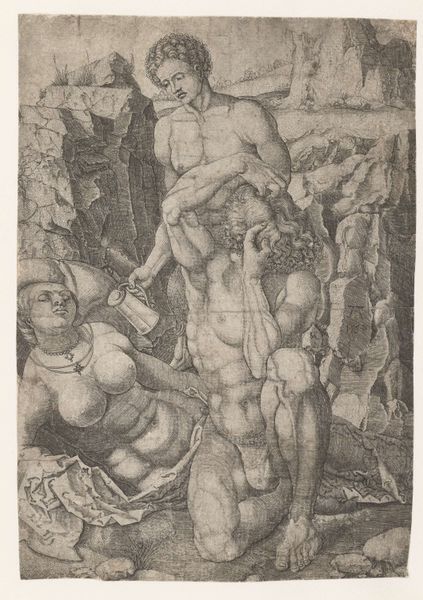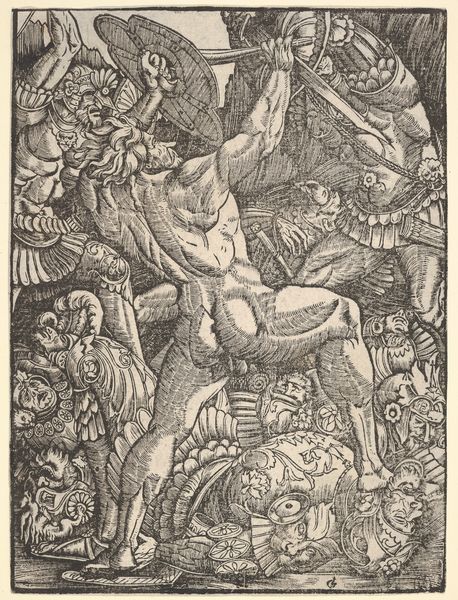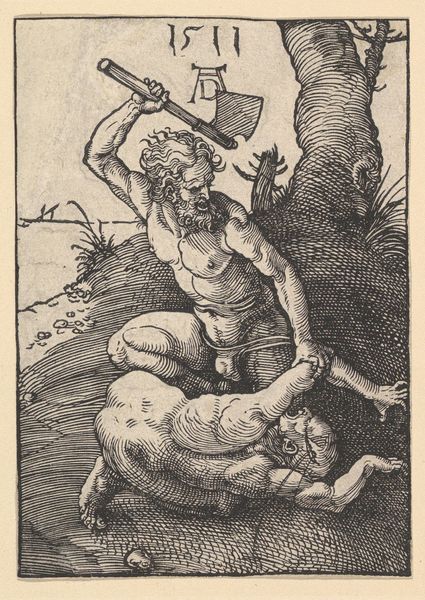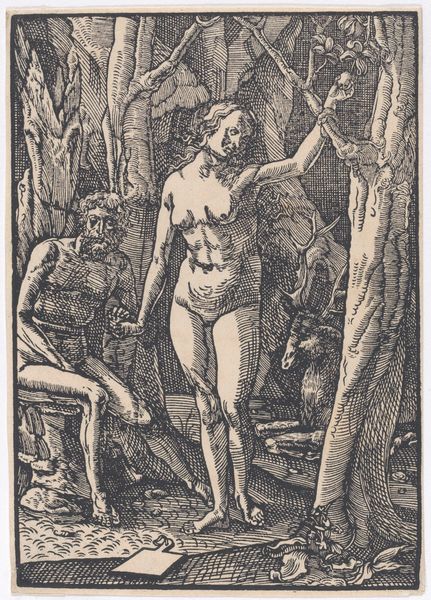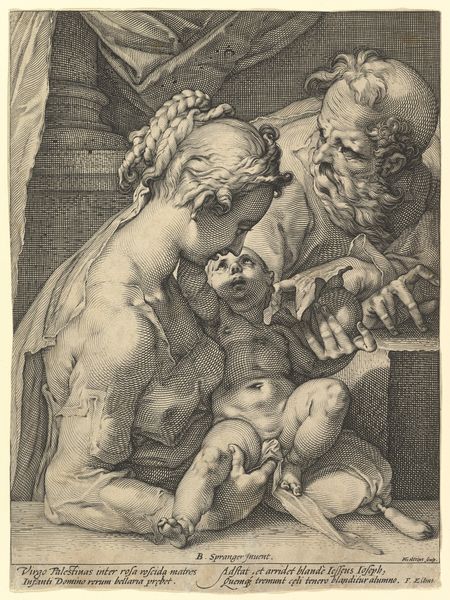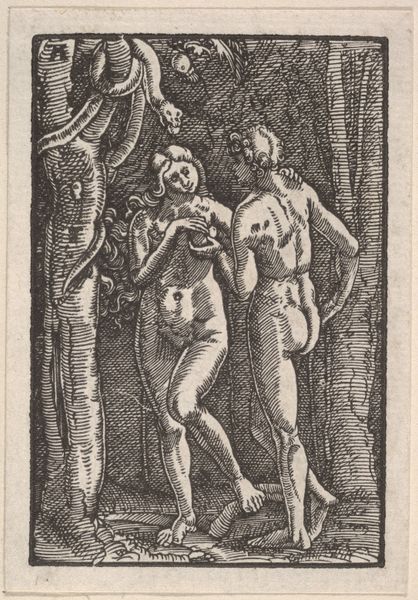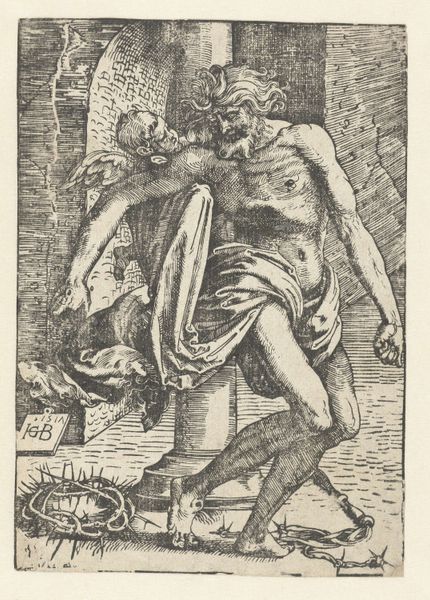
drawing, print, engraving
#
drawing
# print
#
old engraving style
#
figuration
#
history-painting
#
northern-renaissance
#
nude
#
engraving
Dimensions: Sheet: 2 1/2 × 1 11/16 in. (6.4 × 4.3 cm)
Copyright: Public Domain
Editor: Albrecht Altdorfer's engraving, "Two Satyrs Fighting Over a Nymph," made sometime between 1500 and 1538, presents a scene that feels incredibly chaotic. There's so much tension packed into such a small space! I am curious to hear more from your perspective. How do you interpret this work within its historical and cultural context? Curator: Well, consider the resurgence of interest in classical mythology during the Northern Renaissance. Prints like these circulated widely, bringing classical narratives into domestic settings. This particular image plays into the period's fascination with the nude and dramatic scenes, often used to convey moral lessons, though sometimes veiled thinly behind the guise of mythological drama. Editor: A moral lesson? What might that be? Is the viewer meant to see the nymph as a symbol? Curator: Perhaps. The print could comment on male desire and conflict, portraying the nymph as a prize. Think about the distribution of these prints. Who was viewing them? Whose desires and anxieties are being reflected and shaped by these depictions of mythology and gender? Notice how Altdorfer uses the detailed landscape almost as a stage. Does that give you any insight? Editor: It's like the forest itself is a witness, or maybe even complicit in the scene. It’s also interesting to consider the male gaze and who was consuming these images. I guess I was focusing too much on the story itself rather than the power dynamics it reflects! Curator: Exactly! And thinking about who commissioned, collected, and traded prints like these helps us to understand the cultural landscape in which this dramatic scene was produced and understood. How the emerging print market was influenced by the social codes and behaviours. Editor: Thanks, that's a totally new angle for me. Looking at it from the perspective of the consumer of the work, rather than just what’s being depicted. It really enriches the viewing experience! Curator: Precisely, and I’ve found that this analytical method opens new insights, especially when engaging with powerful or disturbing imagery such as this.
Comments
No comments
Be the first to comment and join the conversation on the ultimate creative platform.
